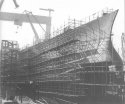Jura The idiot
General
according to NavyTimes New in 2017: The carrier Gerald R. Ford should finally get commissioned — Maybe
source:The new carrier Gerald R. Ford — the most expensive naval ship in history — was supposed to be commissioned in 2016, but a spate of problems with the ship's new technology pushed its entry into the fleet into 2017, though nobody knows exactly when.
The Navy is anxious to get its $13 billion carrier out for sea trials and into workups for its maiden deployment, because delays will affect the fleet's deployment rotations for years to come.
In September, Navy Times sister publication Defense News reported that the Ford's electrical plant was having issues getting up to full power, and that engineers were only now working a solution to the problem. And while Navy officials have faith that the high-tech electromagnetic aircraft launch system is ready for delivery, the advanced arresting gear — designed to rapidly decelerate an aircraft landing on deck — isn't yet ready for prime time.
The first deployment is still slated for 2021, but every delay ratchets up the pressure on the Navy's already stressed deployment schedule. The Navy needs a minimum of 11 carriers to always have a carrier in the Pacific and in the Middle East and also maintain six-or-seven-month deployments for sailors. Yet the Navy has been without 11 carriers since the Enterprise decommissioned in 2013.
That means more rushed deployments and more pressure on the Navy's already stressed maintenance system that will undoubtedly continue for years to come.
"Just getting into the fleet does not mean you've fixed your carrier problem because it's not going to deploy for another few years," said Bryan Clark, a retired submarine officer and analyst with the Center for Strategic and Budgetary Assessments. "The impact will still be more and longer deployments for sailors for as long as there are only 10 carriers in the fleet."









